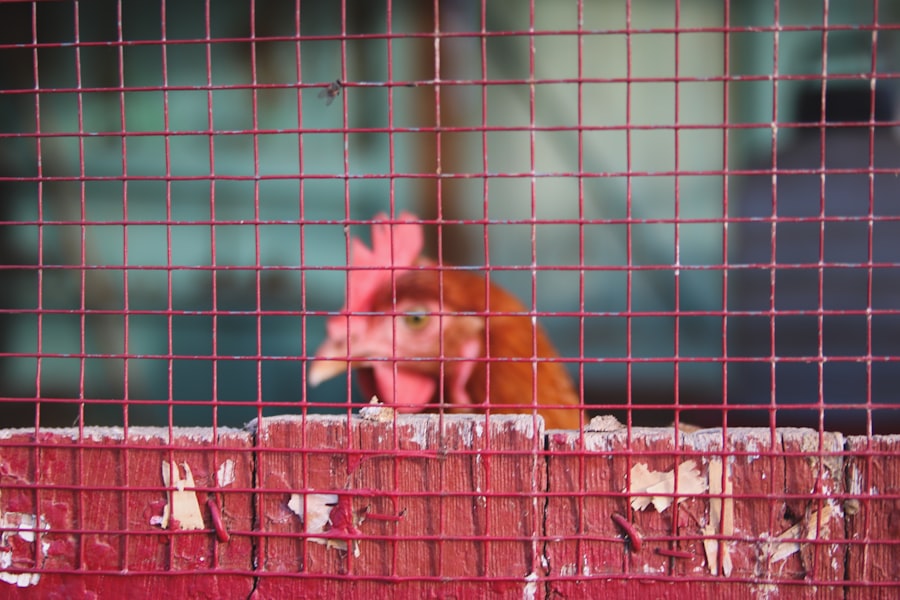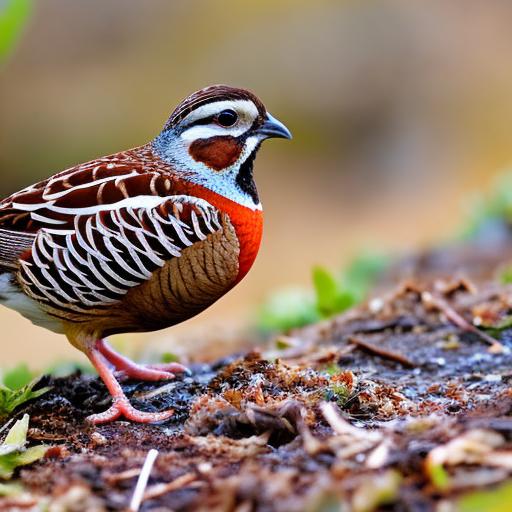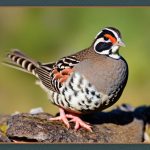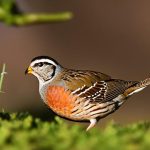When it comes to choosing the right housing for your pet reptile, there are several factors to consider. First and foremost, you need to ensure that the enclosure is large enough to accommodate the specific species of reptile you have. Different reptiles have different space requirements, so it’s important to do your research and understand the needs of your particular pet. Additionally, the enclosure should be escape-proof, with secure locks and latches to prevent your reptile from getting out. It’s also important to consider the material of the enclosure – glass, plastic, and wood are all common options, but each has its own pros and cons. For example, glass enclosures are great for viewing your pet, but they can be heavy and breakable. Plastic enclosures are lightweight and easy to clean, but they can scratch easily. Wood enclosures are natural-looking and provide good insulation, but they can be difficult to clean and may harbor bacteria. Ultimately, the housing you choose should provide a safe and comfortable environment for your pet, while also being practical and easy for you to maintain.
Another important consideration when choosing housing for your reptile is the type of substrate you use. Substrate is the material that lines the bottom of the enclosure, and it serves several purposes – it provides a comfortable surface for your pet to walk on, helps maintain humidity levels, and can also contribute to the overall aesthetic of the enclosure. There are many different types of substrate available, including newspaper, paper towels, reptile carpet, coconut fiber, and more. Each type of substrate has its own advantages and disadvantages, so it’s important to choose one that is appropriate for your specific reptile species. For example, desert-dwelling reptiles may require a substrate that helps maintain low humidity levels, while tropical species may benefit from a substrate that holds moisture well. Additionally, some substrates can be harmful if ingested, so it’s important to choose one that is safe for your pet. Overall, the right substrate can contribute to a healthy and comfortable living environment for your reptile, so it’s worth taking the time to research and choose the best option for your pet.
Key Takeaways
- Choose housing that is appropriate for the specific species and size of your pet reptile
- Provide a diet that is suitable for your reptile’s species and age, including a variety of insects, vegetables, and fruits
- Ensure clean water is always available for your reptile, and change it regularly to prevent bacterial growth
- Create a safe environment by using appropriate substrate, temperature, and humidity levels for your reptile’s species
- Handle and socialize your reptile regularly to help them become more comfortable with human interaction and reduce stress
- Monitor your reptile’s health and wellness by observing their behavior, appetite, and physical appearance
- If considering breeding, research and understand the specific requirements and challenges of your reptile’s species for successful reproduction
Providing the Proper Diet
Proper nutrition is essential for the health and well-being of your pet reptile. Different species of reptiles have different dietary requirements, so it’s important to research and understand the specific needs of your pet. In general, most reptiles are carnivorous or insectivorous, meaning they require a diet of live insects or small animals. Common feeder insects for reptiles include crickets, mealworms, dubia roaches, and superworms, among others. Some reptiles may also require occasional supplementation with fruits and vegetables to ensure they receive all the necessary vitamins and minerals. It’s important to provide a varied diet for your pet reptile to ensure they receive all the nutrients they need to thrive.
In addition to providing the right types of food, it’s also important to consider how often and how much you feed your pet reptile. Most adult reptiles only need to be fed every few days, while juveniles may require more frequent feedings. It’s important not to overfeed your pet reptile, as obesity can lead to a variety of health issues. On the other hand, underfeeding can also be detrimental to your pet’s health. Finding the right balance is key to ensuring your pet receives the proper nutrition without overeating. Finally, it’s important to provide a clean water source for your pet reptile at all times. Some reptiles may prefer a shallow dish of water for drinking, while others may benefit from a misting system or a humid hide to maintain proper hydration levels. Overall, providing the proper diet for your pet reptile is essential for their overall health and well-being.
Ensuring Clean Water
Clean water is essential for the health and well-being of your pet reptile. Reptiles rely on water for hydration, as well as for maintaining proper humidity levels in their environment. It’s important to provide a clean water source for your pet at all times, and to regularly clean and change the water to prevent bacterial growth and contamination. The type of water source you provide will depend on the specific needs of your pet reptile – some species may prefer a shallow dish of water for drinking, while others may benefit from a misting system or a humid hide to maintain proper hydration levels.
In addition to providing clean water for drinking, it’s also important to consider the humidity levels in your pet reptile’s environment. Many reptiles require specific humidity levels to thrive, and providing a source of clean water can help maintain these levels. For example, tropical species may require higher humidity levels, while desert-dwelling species may require lower humidity levels. It’s important to research the specific needs of your pet reptile and provide an environment that meets these requirements. Overall, ensuring clean water is essential for the health and well-being of your pet reptile, so it’s important to make this a priority in their care.
Creating a Safe Environment
Creating a safe environment for your pet reptile is essential for their health and well-being. This includes providing an escape-proof enclosure with secure locks and latches to prevent your reptile from getting out. It’s also important to remove any potential hazards from the enclosure, such as sharp objects or toxic plants, that could harm your pet. Additionally, it’s important to consider the temperature and lighting in your pet reptile’s environment. Most reptiles require specific temperature gradients in their enclosure to regulate their body temperature, as well as access to UVB lighting to help them metabolize calcium and stay healthy.
Another important aspect of creating a safe environment for your pet reptile is providing appropriate hiding spots and enrichment opportunities. Many reptiles are shy by nature and require places to hide and feel secure in their environment. This can be achieved through the use of caves, branches, plants, and other decor in the enclosure. Providing enrichment opportunities such as climbing branches or basking spots can also help keep your pet mentally stimulated and physically active. Overall, creating a safe environment for your pet reptile involves careful consideration of their specific needs and providing an environment that meets these requirements.
Handling and Socializing
Handling and socializing with your pet reptile can be a rewarding experience for both you and your pet. However, it’s important to approach this aspect of care with caution and respect for your pet’s natural behaviors. Not all reptiles enjoy being handled, and some may become stressed or defensive when picked up. It’s important to observe your pet’s body language and behavior to determine if they are comfortable with handling. If your pet shows signs of stress or discomfort, it’s best to avoid handling them and focus on other forms of interaction.
When handling your pet reptile, it’s important to do so gently and confidently to avoid causing unnecessary stress or injury. It’s also important to support their body properly and avoid sudden movements that could startle them. Additionally, it’s important not to handle your pet too frequently or for extended periods of time, as this can be stressful for them. Socializing with your pet can also involve spending time near their enclosure, talking to them, or offering them treats from a distance. This can help build trust and familiarity between you and your pet without causing undue stress.
Overall, handling and socializing with your pet reptile should be approached with patience and respect for their individual preferences. Not all reptiles enjoy being handled, so it’s important to observe their behavior and respond accordingly. With time and patience, you can build a trusting relationship with your pet that benefits both of you.
Monitoring Health and Wellness

Monitoring the health and wellness of your pet reptile is an essential part of responsible pet ownership. This involves observing their behavior and appearance on a regular basis to look for any signs of illness or injury. Common signs of illness in reptiles include changes in appetite or activity level, weight loss or gain, abnormal feces or urates, discharge from the eyes or nose, swelling or lumps on the body, or changes in skin color or texture.
In addition to regular observation, it’s also important to schedule regular check-ups with a qualified reptile veterinarian. A veterinarian who specializes in exotic pets will be able to provide routine wellness exams as well as any necessary medical care for your pet reptile. Regular veterinary care can help catch any potential health issues early on and provide appropriate treatment before they become more serious.
Another important aspect of monitoring the health and wellness of your pet reptile is maintaining proper hygiene in their environment. This includes regularly cleaning their enclosure and providing clean water at all times. It’s also important to keep an eye on the temperature and humidity levels in their environment to ensure they are within the appropriate range for their species.
Overall, monitoring the health and wellness of your pet reptile involves regular observation, veterinary care, and maintaining a clean and appropriate environment for them to thrive.
Breeding and Reproduction
Breeding and reproduction are natural behaviors for many species of reptiles, but they also require careful consideration and planning on the part of the owner. Before considering breeding your pet reptiles, it’s important to research the specific needs of their species and understand the potential challenges involved in breeding and raising offspring.
If you do decide to breed your pet reptiles, it’s important to ensure that you have appropriate housing set up for both the adults and any potential offspring. This may involve separate enclosures for males and females, as well as appropriate nesting sites or egg-laying areas if applicable.
It’s also important to consider the potential impact of breeding on both the adults and any potential offspring. Breeding can be physically demanding on female reptiles, so it’s important to ensure they are in good health before attempting to breed them. Additionally, raising offspring requires time, resources, and knowledge of their specific needs in terms of housing, diet, and socialization.
Overall, breeding and reproduction should be approached with caution and careful consideration of the needs of both the adults and any potential offspring. It’s important to research thoroughly before deciding to breed your pet reptiles and ensure that you are prepared for the responsibilities involved in raising offspring.
Breeding should only be done with the intention of improving the species and promoting genetic diversity, rather than for financial gain or novelty. Additionally, it’s crucial to have a plan in place for finding suitable homes for any offspring that are produced. Responsible breeding practices can help contribute to the conservation of reptile species and ensure the well-being of the animals involved.
Looking for tips on how to keep a quail happy and healthy? Check out this informative article on PoultryWizard that provides valuable insights into creating the perfect environment for your quail. Whether you’re a beginner or an experienced quail owner, this article offers practical advice on housing, feeding, and general care to ensure your quail thrive in their surroundings.
FAQs
What do quails eat?
Quails are omnivorous birds and their diet consists of a variety of foods including seeds, insects, fruits, and vegetables. It is important to provide them with a balanced diet to ensure their health and well-being.
How do I house quails?
Quails can be housed in a variety of enclosures such as cages, aviaries, or coops. It is important to provide them with enough space to move around and access to nesting areas. The housing should also be secure to protect them from predators.
What kind of bedding should I use for quails?
Quails require bedding that is absorbent and easy to clean. Common bedding options include straw, wood shavings, or sand. It is important to regularly clean and replace the bedding to maintain a clean and healthy environment for the quails.
How do I keep quails healthy?
To keep quails healthy, it is important to provide them with a balanced diet, clean water, and a clean living environment. Regular health checks and vaccinations may also be necessary to prevent diseases.
How do I handle quails?
When handling quails, it is important to approach them calmly and gently. Quails can be easily stressed, so it is best to handle them with care and avoid sudden movements. It is also important to support their body properly to prevent injury.
Meet Walter, the feathered-friend fanatic of Florida! Nestled in the sunshine state, Walter struts through life with his feathered companions, clucking his way to happiness. With a coop that’s fancier than a five-star hotel, he’s the Don Juan of the chicken world. When he’s not teaching his hens to do the cha-cha, you’ll find him in a heated debate with his prized rooster, Sir Clucks-a-Lot. Walter’s poultry passion is no yolk; he’s the sunny-side-up guy you never knew you needed in your flock of friends!







